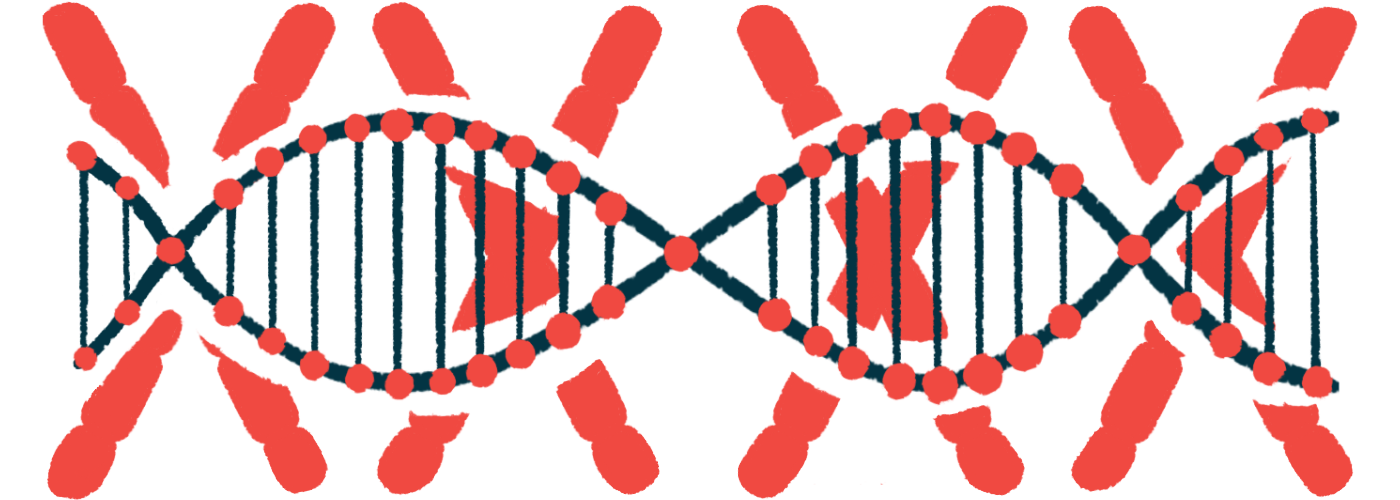Protecting telomeres improves heart cell survival in DMD in study
Structures on end of chromosomes found to play key role in viability

Protecting structures on the end of chromosomes, called telomeres, by increasing levels of the protein TRF2, was found to improve heart cell survival and function in a model of Duchenne muscular dystrophy (DMD), a new study reports.
“Our findings suggest that preserving telomere lengths plays a critical role in maintaining [heart cell] function and viability,” the scientists wrote.
The study, “TRF2 rescues telomere attrition and prolongs cell survival in Duchenne muscular dystrophy cardiomyocytes derived from human iPSCs,” was published in the journal PNAS.
Seeking to increase TRF2 protein levels
DMD is caused by mutations that impair the production of dystrophin, a protein that normally acts like a shock absorber helping to protect muscle cells from damage. The lack of dystrophin leads muscles to accumulate damage and die over time; this affects muscles needed for movement as well as those of the heart. Heart disease is a leading cause of mortality in DMD.
Researchers in previous studies had shown that telomere shortening in heart muscle cells called cardiomyocytes is associated with heart disease in DMD models. Telomeres are repetitive sequences on the ends of chromosomes that function like a cap, helping protect the DNA from becoming frayed or tangled.
The finding that telomeres tend to get shorter when cardiomyocytes become damaged and die in DMD implies that maintaining telomere length might help to prevent DMD-related damage to heart cells.
Now, a team of scientists from Stanford University, in California, conducted a series of experiments to test this idea.
For their research, the team used cardiomyocytes derived from pluripotent stem cells (iPSCs). Put simply, this model involves collecting easily accessible skin or blood cells from patients, then using a series of biochemical manipulations to reverse engineer them into stem cells, and finally growing the stem cells into heart cells. Importantly, cardiomyocytes generated in this way harbor the same disease-causing mutation that’s found in the patient from whom the cells are derived.
The study involved three iPSC-derived cardiomyocyte lines that harbored DMD-causing mutations, as well as three lines of isogenic controls — cells in which the disease-causing mutation had been corrected via gene editing.
“The use of three DMD iPSC lines with matching isogenic healthy controls ensures that results are controlled for genetic background, and consistent differences observed between healthy and diseased states can be attributed to the dystrophin deficiency,” the researchers wrote.
Compared with the isogenic controls, the DMD cardiomyocytes were significantly smaller — only a bit more than half the size, on average. Additionally, the muscle fibers they formed were substantially less dense, which is consistent with reduced heart function in DMD.
In line with prior reports, DMD cardiomyocytes also showed significant telomere shortening. The researchers found that levels of a telomere-associated protein called TRF2 was reduced in DMD cells.
TRF2 normally forms a complex, called the shelterin complex, with other proteins that helps to protect telomeres from damage. The researchers hypothesized that the increasing TRF2 levels might protect telomere length in DMD cardiomyocytes.
Our findings suggest that preserving telomere lengths plays a critical role in maintaining [heart cell] function and viability.
In further experiments, the team demonstrated that increasing TRF2 in DMD cardiomyocytes prevented the shortening of telomeres. Specifically, they deduced that TRF2 helped to prevent a type of damage called oxidative stress, which becomes elevated in DMD muscle cells as they accumulate damage from contractions.
Increasing TRF2 levels also significantly extended the survival of iPSC-derived DMD cardiomyocytes, increasing the percentage of cells that reached day 40. DMD cells with increased TRF2 also were larger and had more dense muscle fibers, overall indicative of better function.
As part of the biochemical process of muscle cell contraction, there is a flux of calcium inside the cell. In DMD cardiomyocytes, this flux was substantially impaired. Increasing TRF2 improved the flux, though not to the level seen in cells with functional dystrophin.
“These results collectively demonstrate that TRF2 upregulation not only confers telomere protection and prevents telomere attrition but provides morphological advantages that impart some functional improvements to DMD iPSC-[derived cardiomyocytes] but does not fully restore the ability to regulate calcium levels,” the scientists concluded.
Further experiments showed that depeleting TRF2 in healthy cardiomyocytes did not lead to the telomere shortening and cell size reduction seen in DMD cells, though muscle fiber density was affected.
“These data suggest that deprotection alone is not sufficient to induce telomere attrition; additional insults in DMD cardiomyocytes, such as oxidative stress, are necessary to induce telomere dysfunction and subsequent cell death,” the researchers wrote.
Based on the findings, the researchers speculated that therapy strategies aiming to protect telomeres by increasing TRF2 may be beneficial in DMD heart disease.






